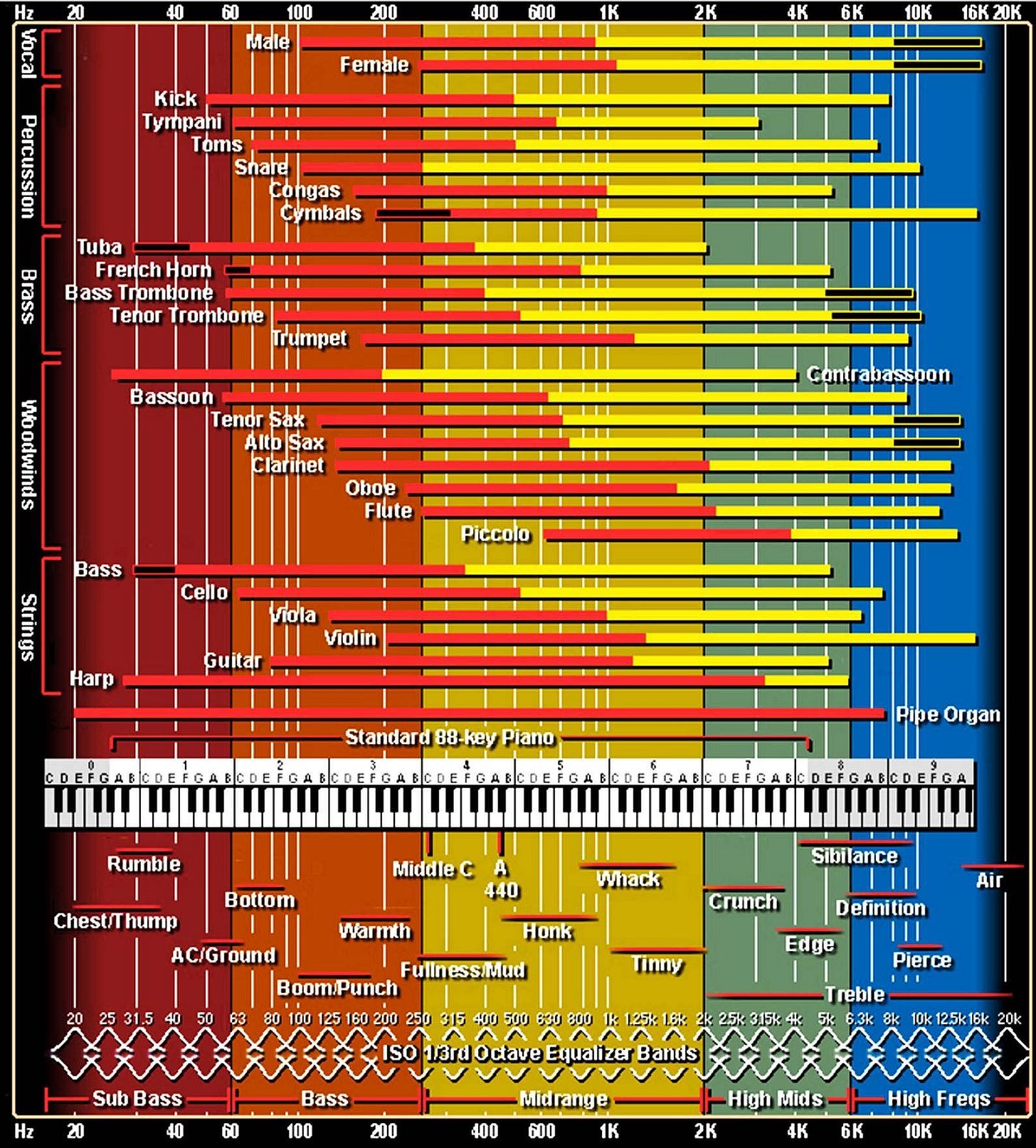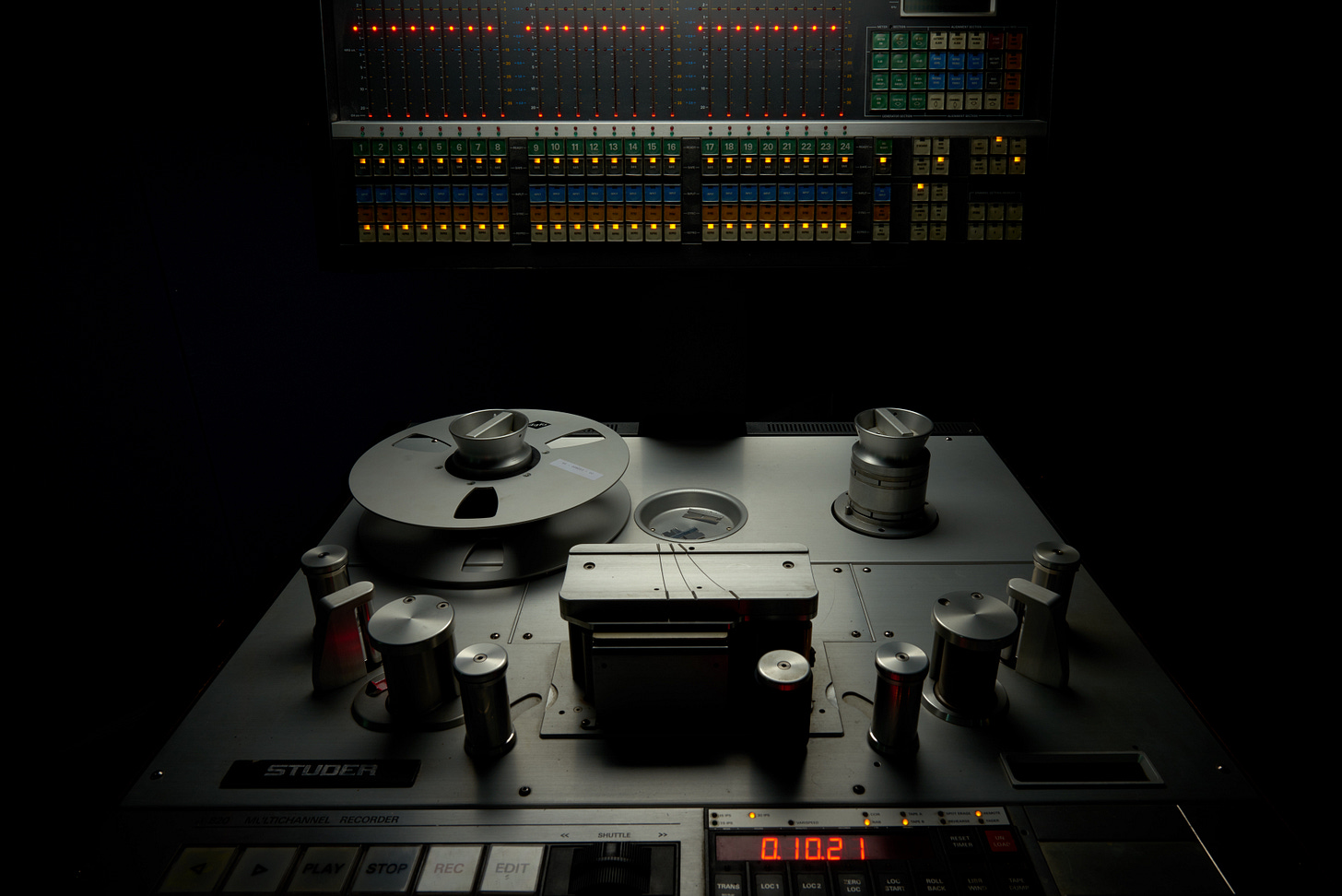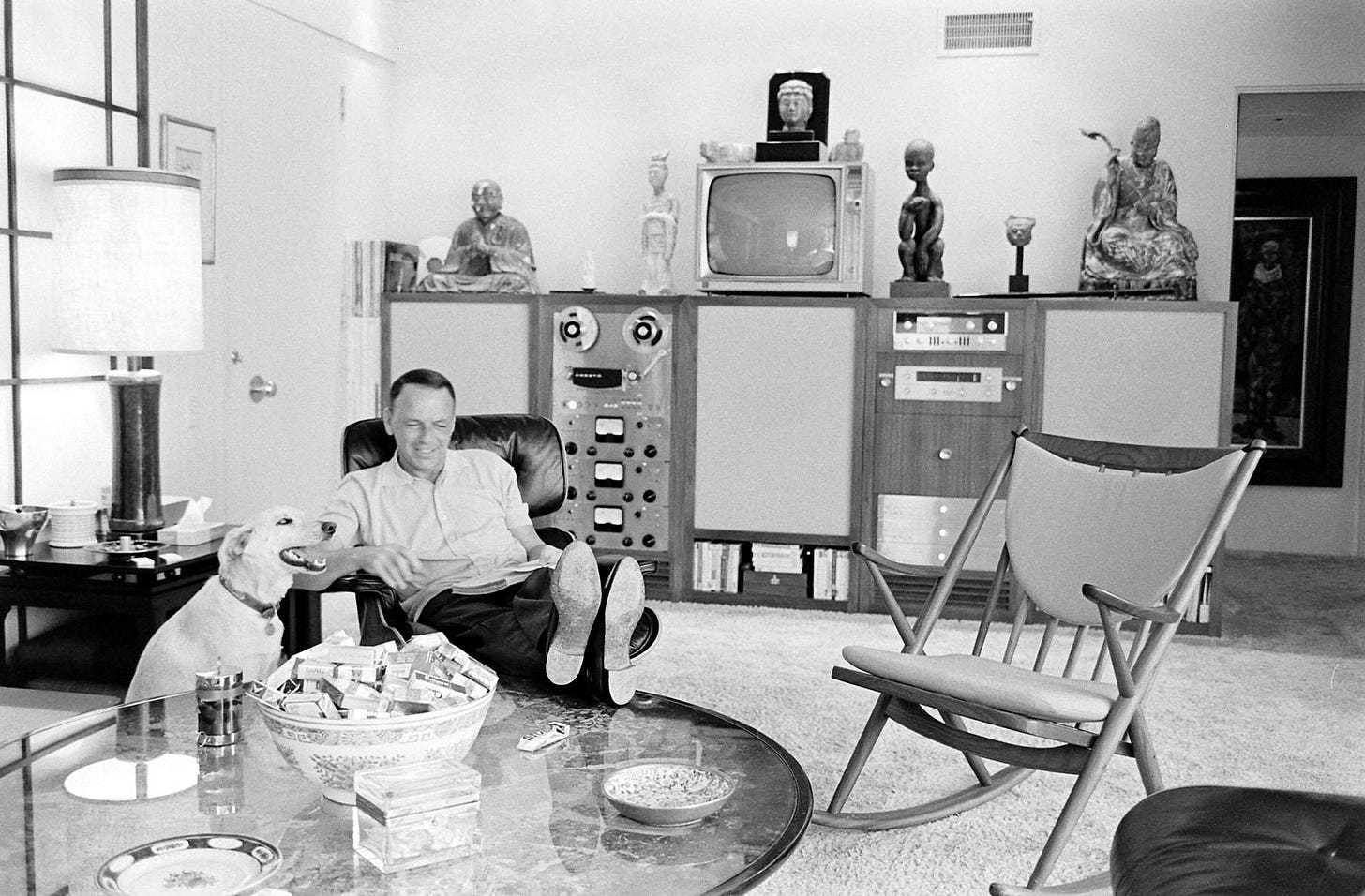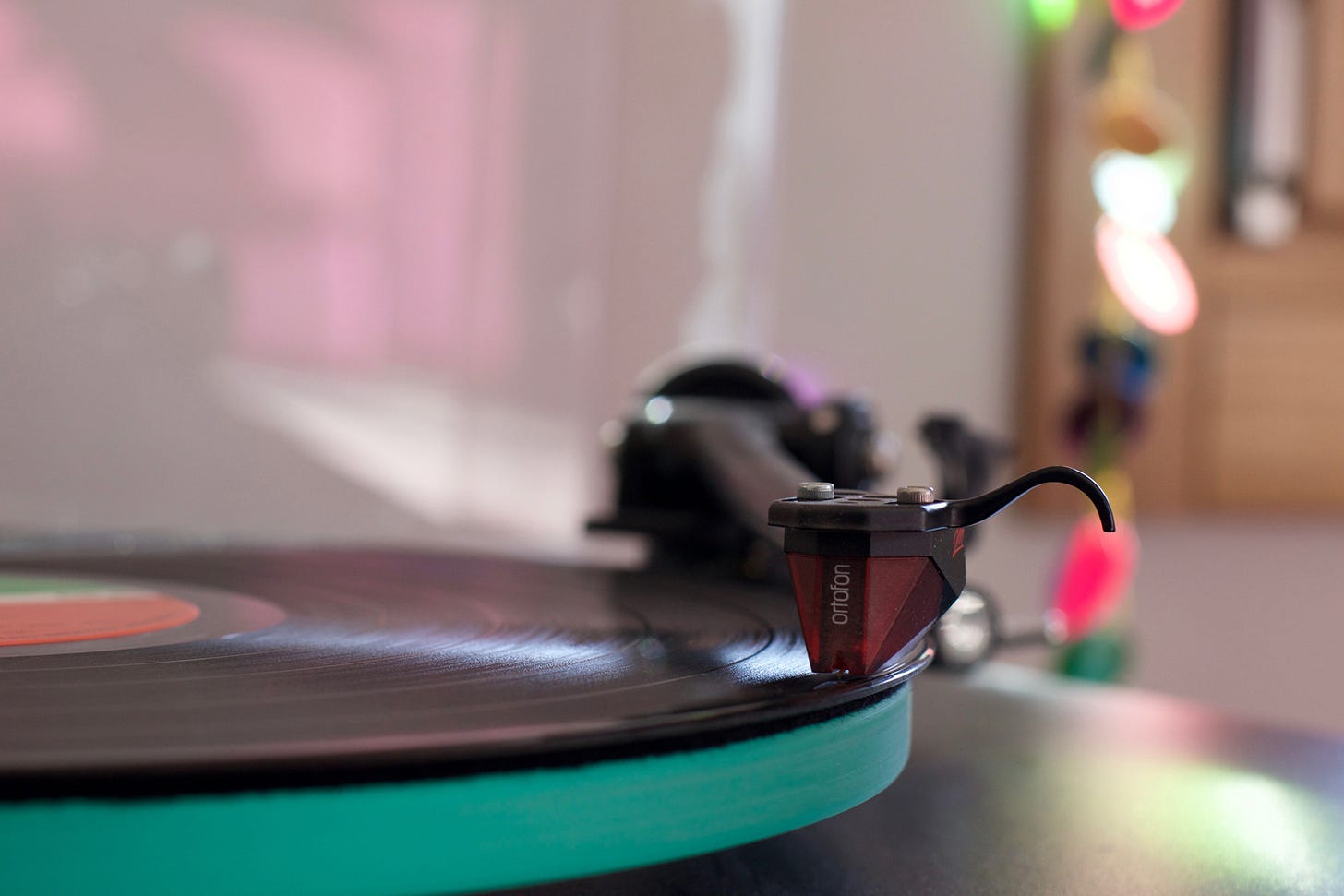It's all about the air
In the late 80s I met the legendary audio engineer Rupert Neve. We talked for a few hours and he shared his thoughts on listening to music. It got me thinking...
This brief video shows Ray Charles being interviewed on the subject of multitrack recording for the superb rockumentary The Language Of Music about the life and work of legendary engineer/producer Tom Dowd.
Ray’s right. Forget the technology, what does it sound like?
Many years ago, I was honoured to have met one of the giants of the professional audio world, the late great Rupert Neve. He is credited with designing the modern recording console amongst many other technical achievements. When he died I wrote a piece about the experience.
We had a great chat, discussing his fascinating history and philosophy, including the subject of ‘air’.
Without this mixture of gasses, life as we know it would not exist on Earth, but the ‘air’ to which Rupert was referring is the term applied to high audio frequencies1 that allegedly most people cannot hear - the mysterious inaudible ‘air’.
In musical terms, frequencies relate to the pitch of an instrument, from bass guitar and kick drum (low) to the shimmer of a cymbal (high). Frequency is measured in Hertz (Hz) and thankfully, nothing to do with the car rental company.
According to research, humans in laboratory conditions can hear between 12 Hz and as high as 28,000 Hz (28 kHz) but most of us mere mortals can only hear up to 16 kHz, which drops off quite rapidly with age and even quicker if you are a rock ‘n roll musician.
Bats, porpoises (yes, you read it correctly, porpoises) and people with gifted hearing2 will appreciate that Rupert designed his audio equipment with ‘air’ in mind, ensuring that electronics pass a massive range of frequencies, far beyond what conventional wisdom would deem necessary.
To put this into context, here are the frequency ranges that musical instruments operate in. The top bar shows the frequencies from 20 Hz - 20 kHz.
As you can see there isn’t a right lot above 16 kHz so what’s all the fuss about ‘air’?
Is it horseshit?
Many studies have been conducted about the potential benefit of extending the bandwidth of musical recordings above 16 kHz and the results have mostly been inconclusive3. However, Rupert Neve and many other industry luminaries think it is beneficial, if not essential4.
Even though my ears have been ravaged by monstrously loud guitar amps and Edward Byron Taylor III (the drummer in my first band Whitefire), beating the shit out of his 20” Paiste China-type cymbal, I believe that I can still ‘feel’ these frequencies.
Now, before you get all agitated and tell me I am speaking horseshit, read on.
Harmonics and overtones
Harmonics and overtones5 are generated by all musical instruments and are what differentiates them.
For example, a middle C (256 Hz) on a piano doesn’t sound like a middle C on a guitar. This is because of the overtones and harmonics, which make the timbre of the sound unique to the instrument. Two similar guitars playing the same note will also sound different for the same reason.
The frequencies of these harmonics and overtones can be well above our 16-20 kHz hearing range. When you attend a concert without amplification you will hear the full range of the instruments.
“I once heard a story about a specific transformer-based mixing console channel that sounded way better than the other channels of the same console... more ‘air’ etc. The reason? A capacitor was causing a frequency boost well above 20 kHz in that preferred channel. This channel had become the ‘vocal’ channel for all recordings, it just sounded...better.” | Duco de Rijk, founder of D&R Audio
When you listen to music that has been recorded or amplified ‘air’ can be, and is mostly lost.
Recording ‘air’
A recording console is a device which enables you to mix many audio signals together and has been around since the dawn of radio and recording. Originally these were based on old-school electronics (analogue) but it all changed in 1987 when digital consoles appeared on the market.
Analogue
Despite the dwindling market, several companies still manufacture analogue consoles. They are big and heavy, consume a lot of electricity and require regular maintenance. However, many devotees of analogue technology (us included) are prepared to live with these issues because we just love the sound.
Vintage recording consoles, all the way back to the 50s are still in daily use. Top recording studios worldwide boast of owning CADAC, Neve, API, Trident, Sphere, Electrodyne, MCI, Sound Techniques, Studer, Calrec and Helios models which are revered by their owners and clients alike.
In the context of this article, the important feature of all these consoles is their extremely wide bandwidth (range of frequencies) which allows the ‘air’ frequencies to pass through.
For example, the CADAC J series console (aka Betty) residing in the Supertone studio in Portugal boasts a bandwidth of 5-65 kHz +/- 0.5db and weighs in at 450 Kg - that's a lot of ‘air’ and a lot of effort to move around.

When writing about his new eight-hour organ piece, 268 years of reverb, musician, composer and inspirational sound experimentalist Johnny Greenwood of the bands Radiohead and The Smile wrote:
“Melodies in Indian music are often thought of as circular, rather than linear – you’re climbing on to a moving wheel, not starting and ending in silence.
This is why the first and last chords of 268 years of reverb incorporate notes below/above audible frequencies. In this way, the music passes across the room as it passes across the audible spectrum, in the same way a rainbow is only the narrow range of the visible spectrum amongst all possible frequencies of light.”
Humans cannot hear or see everything - illustrated by the throngs of lobster-red British sunbathers who think those sneaky, ultraviolet rays don’t exist because they are invisible to the human eye.
Take a sample
Firstly, let’s be clear we are not talking about stool samples but ‘audio’ samples.
As soon as we move into the digital world things become more complex. We no longer discuss manipulating electrical signals, but instead the binary world of ones and zeros.
This isn’t the place to discuss how digital works, but if you want to blow your brains out, read this Wikipedia article.
This essay isn’t meant to be technical but does need to expand a little on the theory. If you are losing the will to live at this point, go immediately to ‘Breath it’, don’t pass go; don’t collect £200.
Digital technology: the physics
Digital consoles for professional use have ‘bit depths’ and ‘sample rates’ capable of capturing the ‘air’. But what the hell are bit depths and sample rates?
Sampling
In short, when analogue audio is recorded digitally it is sampled thousands of times per second and converted to binary code: ones and zeros. Look into this further and figures such as 24-bit, 96 kHz will pop up.
96 kHz refers to 96,000 snapshots taken (samples) of the audio every second. This sampling rate can reproduce audio frequencies up to 48 kHz6 (the Nyquist frequency), well into Rupert’s ‘air’ territory.

Dynamic range
The ‘bit’7 part of the equation is about the resolution of each sample, specifically the signal-to-noise ratio and dynamic range (defined as the ratio of the loudest peak to the quietest) which is important to maintain the integrity of audio that goes from the very quiet to very loud.
For instance, a 16-bit recording system provides 65,536 discrete values to represent the amplitude of a sound wave and 24-bit has over 16.7 million levels.
Cutting it off
I am not getting into the full Nyquist-Shannon theorem8 as that even freaks me out, but to put it simply, if you feed into digital converters frequencies higher than the Nyquist frequency (half the sampling rate), you may get unexpected results that are both audible and unpleasant, known as aliasing.
To avoid this, designers of digital systems add low pass filters before ‘digitisation’ to remove those frequencies. If we are talking about a sampling rate of 44.1 kHz and hence a Nyquist frequency of 22 kHz (the rate for all CDs) we cut off the precious ‘air’.
Oh shit…
Breathe, breathe in the air…
Unlike analogue, digital has rigid, physical limitations to the bandwidth it can capture. If ‘air’ is truly unimportant, why do most professional studios set their systems to record frequencies that mere mortals cannot hear?
Manipulation
Recording at higher resolutions (over 24-bit, 96 kHz) enables musicians, producers and recording engineers to perform complex functions with the audio which is not possible if you record at a lower resolution.
In addition, the audio gremlins (aliasing) which I discussed earlier, will be pushed well out of the audible frequency band.
Of course, the added benefit for us audio mountaineers is that these higher rates allow the harmonics of the music to be recorded using digital technology. You can record the ‘air’.
Does this matter?
Music is about emotion. It’s everywhere and has been around since the dawn of man. Although now totally undervalued, it is an essential part of being human. I believe that the ‘feel’ of recorded music is down to, and in this order:
the composition
the performance
the recording quality
the reproduction
The recording quality is immaterial if the composition and/or the performance are poor.
Imagine this scenario - we are in the studio. We have great musicians, a fabulous song and want to record it.
The sound engineer will use one or more microphones plugged into a preamplifier(s), which boosts the weak microphone signal to a higher level and then records either to magnetic tape - or in the digital world, through an Analogue to Digital converter (A/D), which converts the sound from analogue waveforms into streams of binary code before committing the information onto a hard disk.
Once the recording and overdubbing9 is complete, the reverse takes place and tracks are mixed either fully in the digital domain, or through an analogue mixing console like our very own ‘Betty’ the CADAC.

Eventually, the sound ends up again in the analogue domain - reproduced by speakers of various sizes and shapes: nowadays designed directly to put inside your ear holes.
Recording option #1 - digital
Almost all professional studios now record to digital. Some also have tape machines, but ones and zeros now rule.
There is a bewildering array of A/D (Analogue to Digital) and D/A (Digital to Analogue) converters out there and the pro-audio community rage about the best in class, but most convert at the golden rates of 24-bit, 96 kHz and above.
In 1979, the first digital pop album, Bop Till You Drop by Ry Cooder, was recorded in 50 kHz, 16-bit linear PCM using a 3M digital tape recorder. Before this, analogue tape10 machines ruled the audio roost. It was a mature technology.
When I listen back to this wonderfully performed record it sounds a bit crunchy and harsh, as do many of those early digital releases. This is down to the crudeness of early A/D D/A converters, sample rates/bit depth employed and the technology surrounding them.
Recording option #2 - tape
I can wax lyrical for days about the ‘sound’ of the lovely Studer 2” 16/24-track and Ampex 1/2” two-channel tape machines, but not so much about the pain in the arse and expense of buying the tape, aligning, calibrating and editing physical pieces of plastic..
“But there I was waist deep in 2” tape, sick, up all night trying to make sense of all these pieces of tape, china marked with arrows and instructions about which way to glue them all back together” | Daniel Lanois, from his excellent book Soul Mining.
Yes, they sound great but when you look at the specifications they quote a bandwidth of 20-20kHz (+/-). So, what happens above 20 kHz, well nothing really, as they gracefully roll off and the ‘air’ is still there.
There is a lot more to ‘why’ tape sounds so good and if you want to know more, please ask me in the comments section below. I can bore you to death on an individual level.
Even now, in a very digital 2024, many recording studios, audio engineers and record producers such as Nigel Goodrich and Steve Albini still record to tape as they believe it sounds better.
We would love to have the tape option in our Supertone recording studio, but the difference is that Nigel and Steve can afford it; sadly we can’t.
However, we record digital using RADAR converters which we consider the best of the bunch, reaching the dizzy heights of 24-bit, 196 kHz - that’s a shedload of ‘air’!!
Listening options
Audiophile listeners have been around for many years and professional music recordists are flabbergasted by the utter bullshit that is talked about, and extortionate prices paid, for everything from power and speaker cables to phono pre-amps.
There is great esoteric stuff available to buy but a note for hi-fi enthusiasts - take a look at the equipment professional studios use to record music and buy that instead. You will save a LOT of money. And I mean a LOT!!!!
Your most critical purchase is the actual ‘player’ as this is the limiting factor for reproducing great sound. You can have the best amplifiers and speakers in the world but they can only do their job if the source is of the highest quality.
Different strokes
I won’t go into detail here about the actual equipment used, just the limitations when it comes to ‘air’.
Files
The most accurate - but not the most pleasing - way to listen to music is by playing the high-resolution files supplied by the mastering engineer in a .wav or .aiff format.
You will need a computer and a high-quality D/A convertor similar to those found in the recording studio. Bang the analogue outputs into a great amplifier and speaker/headphone setup and boom, off you go.
Many bands now supply these files through their label or via providers such as Bandcamp (our favourite at the moment) and are usually 24-bit, 96 kHz which gives you plenty of ‘air’ but as you will see later watch out for CD resolution of 16-bit, 44.1 kHz.
Streaming, compression and lossless formats
There are an increasing number of companies offering lossless streaming. Tidal HiFi, Amazon Music HD, Deezer, Qobuz, and Apple Music support lossless audio. The minimum specification for lossless is CD quality and consequently little ‘air’.
Apple’s Music catalogue is available in resolutions ranging from 16-bit, 44.1 kHz to 24-bit, 192 kHz depending on the artist and album.
Remember here of course the quality depends on the D/A converters and you will still need a great interface to hear them in their full glory and not the headphone socket on your computer or phone.
Apart from FLAC11 and a few lesser-used lossless formats, compression12 totally ruins the audio experience sucking the life out of any track.
.mp3 - just don’t.
Reel-to-reel tape and cassette
These days, reel-to-reel tape machines are a rare sight in a domestic setting but cassette machines are on the rise again.
As mentioned before, maintenance and calibration are expensive, but if you are dedicated and have the financial wherewithal, reel-to-reel machines made by Studer, Ampex and Revox are the best way to listen to recordings.
Of course, you have to be in a privileged position to own the actual master tape (the original final copy of the music) or a first-generation copy. The only problem here is the more you play the tape, the more degraded the sound becomes as the tape simply wears out, but at first, there is all the ‘air’ you need.
Sadly cassette machines are just not great.
At their height, the Nakamichi Dragon was the best domestic machine around but regardless of manufacturer, the frequency response is poor, noise reduction technology needs to be employed and high-frequencies boosted to make it sound anywhere near half decent.
In the studio we have a great old Denon DR-M44HX three-head machine which is pretty top end, but not a patch on a reel-to-reel so don’t be fooled by the current hype.
The Compact Disc (CD)
Specifications for the CD13 were jointly devised back in 1979 by engineers at Philips & Sony and originally aimed at a playing time of 60 minutes.
Allegedly, Sony vice-president Norio Ohga suggested extending the capacity to 74 minutes to accommodate the recording of Wilhelm Furtwängler conducting Ludvig van Beethoven's Ninth Symphony at the 1951 Bayreuth Festival.
The physical constraints of the CD allowed for 74-80 minutes and dictated a sample rate of 44.1 kHz - equating to a maximum reproducible frequency of around 22 kHz with a dynamic range of 16-bit.
These limits were put in place for practical reasons - determined by how much information could be stored on a CD as opposed to being guided by principles such as the sonic integrity of the material!
If a CD cuts off at 22 kHz what happens to the ‘air’?
Where does vinyl fit into all this?
We love vinyl and mix all our music to sound great when reproduced on this fantastic medium - the royalty of sound reproduction.
Scientifically, vinyl shouldn’t sound great, but it does14.
When you want to release a project on vinyl, the recording studio or mastering engineer sends a master tape or high-resolution digital file (usually 24-bit, 96 kHz or above) to the person who then cuts the vinyl lacquers using a very expensive and increasingly rare disc cutting lathe.
Even though this technology by today’s standards is viewed as prehistoric, there is no hard roll off of frequencies with vinyl and providing the stylus/cartridge is capable of reproducing the frequencies, the ‘air’ will be there.
How we listen
The all-important question is, do we walk the walk and feel the ‘air’?
Yes, most definitely. We live in our recording studio and hence have access to all the goodies that provide playing back at whatever resolution we need, but for our listening pleasure, we prefer to listen to our music on vinyl.
We have a Rega RP3 turntable, Ortofon red cartridge into an 80s vintage Quad 44 preamp, Meyer Sound CP-10 (to equalise the room acoustics), Quad 405-2 power amplifier and a pair of 70s Tannoy HPD 315A drivers in our own design Supertone cabinets.
Playing vinyl records is an enriching tradition and ritual giving added meaning to the listening experience, complimented by great company and a good bottle of Portuguese red.
Our current musical inspiration on the Supertone turntable is the limited edition blue vinyl of The Smile’s second studio album ’Wall Of Eyes’ which can also be downloaded from Bandcamp at the lovely 24-bit 96 kHz resolution.
This year we are making time to live well, eat well and embrace life with all its promise - it is good to take some time out, relax, breathe deeply and feel the music in the ‘air’.
The process of adding new instruments or vocals to the initial recording











Great read Simon, lots of cool and enlightening information. Yes some of this is quite fascinating. I remember reading information theory by Claude Shannon… mind blowing… brilliant